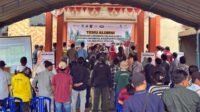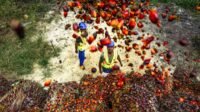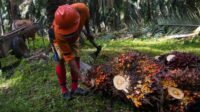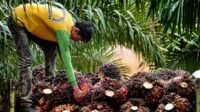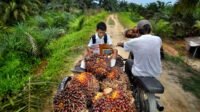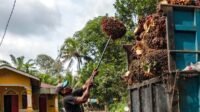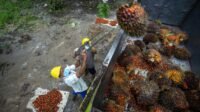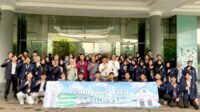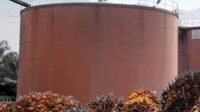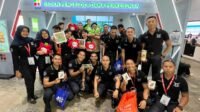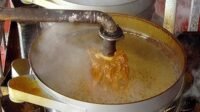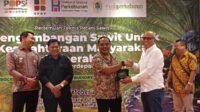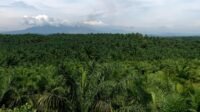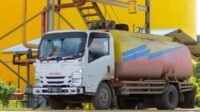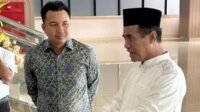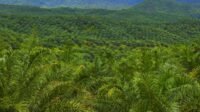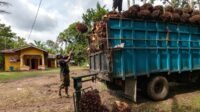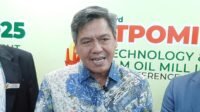PALMOILMAGAZINE, PANDEGLANG, BANTEN – The Indonesian government continues to promote innovative land-use strategies to boost national food production. One of the latest initiatives is the intercropping of upland rice (padi gogo) on smallholder oil palm replanting (PSR) land in Panacaran Village, Munjul Subdistrict, Pandeglang Regency, Banten Province.
This program is part of the Ministry of Agriculture’s (MoA) broader strategy to maximize the use of plantation land. Beyond supporting the sustainability of smallholder oil palm, it also aims to reinforce Indonesia’s long-term food self-sufficiency goals.
The symbolic planting took place on land owned by the Suka Tani Farmers’ Group, which is included in the designated 850-hectare planting area (CPCL) in Munjul Subdistrict. The planting will continue from September to October, coinciding with the peak rainy season in Banten.
Minister of Agriculture Andi Amran Sulaiman emphasized that integrating food crops with plantation crops represents an important breakthrough in addressing future food security challenges.
“Smallholder oil palm replanting areas should not be left idle. By intercropping upland rice, we can increase rice production while providing farmers with added economic value,” said Minister Amran.
Echoing this, Heru Tri Widarto, Secretary of the Directorate General of Plantations, explained that smallholder replanting not only ensures long-term plantation sustainability but also provides opportunities for farmers to earn additional income while waiting for their palm trees to mature.
“This integration will serve as a national model of how the plantation subsector can directly contribute to food security,” he stated, as quoted by Palmoilmagazine.com from the Plantation Directorate General’s website.
Local farmers also welcomed the initiative. Sumarna, head of the Suka Tani I Farmers’ Group in Panacaran, said:
“Pandeglang has vast potential dryland areas. This upland rice intercropping program will significantly boost rice production and help achieve national food self-sufficiency,” he said.
To support the program, the MoA has distributed production inputs and certified upland rice seeds (Inpago 13 Fortiz) for the September–October planting season. Seed distribution was completed in July 2024, amounting to 217,840 kilograms for 10,829 hectares of land. Additionally, 21,784 liters of herbicides were distributed in August 2025, while pesticides will be supplied once planting activities are in full swing.
Overall, the CPCL allocation for upland rice in Banten Province for the 2025 fiscal year reaches 15,354 hectares, consisting of 10,829 hectares in Pandeglang, 4,389 hectares in Lebak, and 136 hectares in Serang.
With this cross-subsector synergy, the government is optimistic that the upland rice–oil palm integration program on PSR land will become a national model.
“Strategic steps like this are key to strengthening food security, improving farmers’ welfare, and ensuring the sustainability of our plantations,” Heru concluded. (P3)





